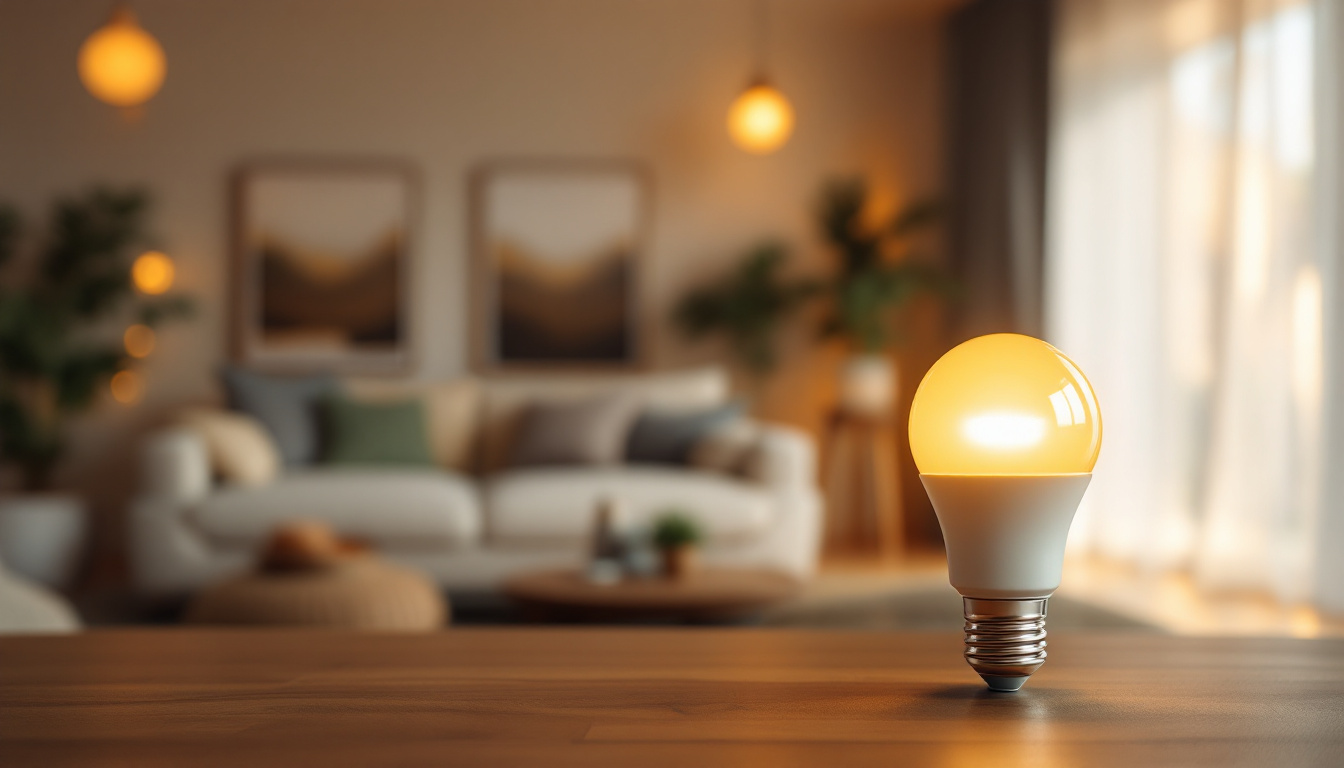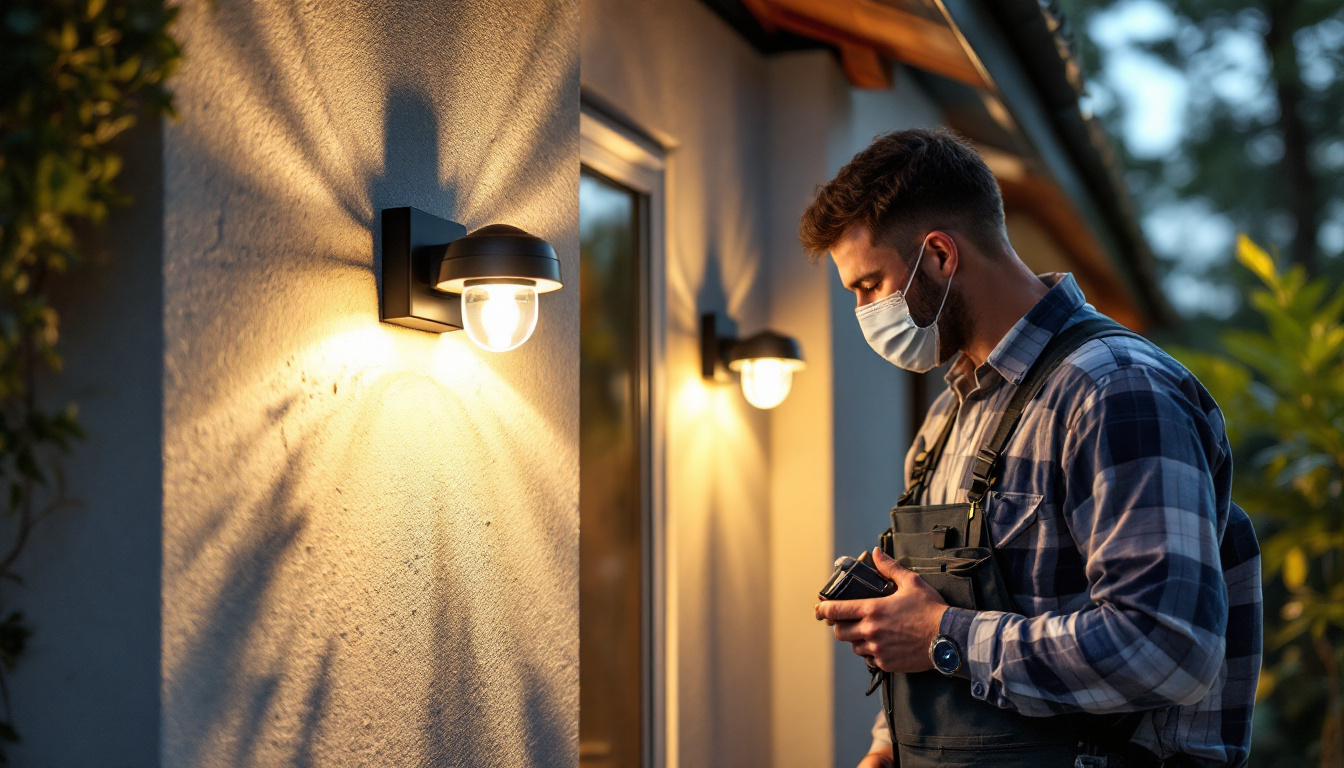
In the rapidly evolving world of lighting technology, LED light bulbs have emerged as a cornerstone for efficiency and sustainability. For lighting contractors, understanding the dimensions of LED light bulbs is crucial not only for installation but also for maximizing energy savings and enhancing client satisfaction. This article delves into the various dimensions of LED light bulbs, their implications for contractors, and how to leverage this knowledge for improved project outcomes.
LED light bulbs come in a variety of shapes and sizes, each designed for specific applications and fixtures. The dimensions of these bulbs can significantly impact their performance, compatibility with existing fixtures, and overall effectiveness in illuminating spaces. Knowing the standard measurements can help contractors make informed decisions when selecting bulbs for various projects.
LED bulbs are available in numerous shapes, including A-series, PAR, BR, and MR. Each of these shapes has a standard size associated with it, which is typically measured in inches or millimeters. For instance, the A19 bulb, one of the most common types, has a diameter of 2.4 inches and a height of 4.3 inches. Understanding these dimensions is essential for ensuring that the bulbs fit properly in fixtures and provide the desired light output.
In addition to standard sizes, contractors should also be aware of the various bulb shapes. For example, PAR (Parabolic Aluminized Reflector) bulbs are often used in recessed lighting and track lighting, while BR (Bulged Reflector) bulbs are commonly found in outdoor floodlights. Each shape serves a unique purpose and has specific dimensional requirements that can affect installation and performance. The MR (Multifaceted Reflector) bulbs, often used in accent lighting, come in various sizes, such as MR16 and MR11, which are crucial for achieving the right beam angle and light distribution.
The base type of an LED bulb is another critical dimension that contractors must consider. Common base types include E26 (medium), E12 (candelabra), and GU10 (twist-and-lock). The base size not only affects compatibility with fixtures but also influences the ease of installation. For example, E26 bases are widely used in residential settings, while GU10 bases are often found in commercial applications.
Contractors should ensure that the base type matches the fixture to avoid compatibility issues. This consideration is particularly important when retrofitting existing lighting systems with LED technology, as mismatched bases can lead to costly delays and additional labor. Additionally, some LED bulbs come with integrated bases that are designed to fit specific fixtures, which can simplify the installation process but may limit options for future upgrades. Understanding the nuances of base types can help contractors not only in selecting the right bulb but also in planning for long-term maintenance and adaptability of lighting systems.
Furthermore, it’s worth noting that the wattage equivalency of LED bulbs is often a crucial factor in selection. Many contractors choose LED bulbs based on their brightness, which is typically measured in lumens. For example, an LED bulb that uses only 10 watts can provide the same brightness as a traditional 60-watt incandescent bulb, making it essential to consider both the wattage and the lumen output when making selections. This understanding not only aids in creating energy-efficient lighting solutions but also enhances the overall satisfaction of end-users who expect high-quality illumination in their spaces.
The dimensions of LED light bulbs play a significant role in their energy efficiency. A well-designed bulb can maximize light output while minimizing energy consumption, leading to substantial savings for both contractors and clients. Understanding how dimensions affect energy efficiency can help contractors make better choices in their projects.
The beam angle of an LED bulb, which is influenced by its dimensions, determines how light is distributed in a space. A wider beam angle is ideal for ambient lighting, while a narrower beam angle is better suited for task lighting or accent lighting. Contractors should consider the intended use of the space when selecting bulbs with specific beam angles.
For example, in a retail environment, a narrow beam angle may be necessary to highlight specific products, while a wider beam angle might be more appropriate for general illumination in a living room. By understanding the relationship between bulb dimensions and beam angle, contractors can enhance the effectiveness of their lighting designs.
Another critical aspect of LED bulb dimensions is heat management. LEDs generate heat, and how that heat is dissipated can significantly impact the bulb’s lifespan. Bulbs with larger surface areas can often dissipate heat more effectively, leading to longer operational life and improved performance.
Contractors should pay attention to the design of the LED bulbs they select, particularly in applications where heat buildup may be a concern. Choosing bulbs with adequate heat management features can ensure that clients benefit from the full lifespan of the product, reducing the need for replacements and maintenance.
When selecting LED bulbs for projects, contractors must consider several factors beyond just dimensions. While size and shape are important, other criteria such as color temperature, lumens, and energy ratings also play a vital role in ensuring the right choice is made.
Color temperature, measured in Kelvins (K), affects the ambiance of a space. Warmer temperatures (around 2700K) create a cozy atmosphere, making them suitable for residential settings. In contrast, cooler temperatures (5000K and above) are often preferred in commercial environments for their crisp and vibrant light.
Contractors should discuss color temperature preferences with clients to ensure that the selected LED bulbs align with the desired mood and functionality of the space. Understanding the dimensions of the bulbs in relation to their color temperature can help contractors provide tailored lighting solutions.
Lumens measure the total amount of visible light emitted by a bulb, while efficacy ratings indicate how efficiently a bulb converts electricity into light. When selecting LED bulbs, contractors should prioritize those with higher lumen output and efficacy ratings to maximize energy savings and ensure adequate illumination.
For example, a bulb with a high lumen output but low efficacy may not be the best choice, as it could lead to increased energy costs over time. Contractors should educate clients about these metrics to help them make informed decisions that align with their lighting needs and budget constraints.
Proper installation of LED light bulbs is essential to ensure optimal performance and longevity. Contractors must be aware of the specific dimensions and requirements of each bulb type to avoid common pitfalls during installation.
One of the primary concerns during installation is ensuring compatibility between the LED bulb and the existing fixtures. Contractors should measure the fixture dimensions and compare them with the bulb specifications to confirm a proper fit. This step is particularly crucial when retrofitting older lighting systems with new LED technology.
Additionally, contractors should consider the orientation of the bulbs in relation to the fixture design. For instance, some fixtures may require bulbs to be installed in a specific orientation to achieve optimal light distribution. Understanding these nuances can help contractors avoid installation errors and enhance the overall performance of the lighting system.
During installation, contractors may encounter various challenges, such as limited space in fixtures or the need for specialized tools. Being prepared for these challenges can streamline the installation process and ensure a successful outcome.
For example, when working in tight spaces, contractors may need to use smaller tools or adjust their installation techniques to accommodate the dimensions of the bulbs. Additionally, having a thorough understanding of the electrical requirements of the bulbs can help prevent issues related to wiring and compatibility.
The LED lighting industry is continuously evolving, with new technologies and innovations emerging regularly. Staying informed about these trends can help contractors remain competitive and provide the best solutions for their clients.
Smart LED technology is gaining traction, allowing users to control lighting remotely through smartphones or smart home systems. These bulbs often come in various dimensions and shapes, making them suitable for a wide range of applications. Contractors should familiarize themselves with the specifications and installation requirements of smart LED bulbs to offer clients the latest advancements in lighting technology.
Moreover, smart LED bulbs often come with features such as adjustable color temperatures and dimming capabilities, providing clients with greater flexibility in their lighting designs. Understanding these features can help contractors recommend the best options for specific projects.
As energy efficiency becomes increasingly important, regulations and standards surrounding LED lighting are likely to evolve. Contractors should stay updated on local and national energy codes to ensure compliance and help clients take advantage of potential rebates or incentives for using energy-efficient lighting solutions.
By being proactive in understanding these regulations, contractors can position themselves as knowledgeable experts in the field, which can lead to increased client trust and loyalty.
In conclusion, understanding LED light bulb dimensions is essential for lighting contractors seeking to boost efficiency and enhance client satisfaction. By considering factors such as bulb shape, base type, and energy efficiency, contractors can make informed decisions that lead to successful project outcomes.
As the industry continues to evolve, staying informed about trends, regulations, and installation best practices will further empower contractors to provide exceptional lighting solutions. Embracing the nuances of LED technology, including dimensions and specifications, will ultimately contribute to a more sustainable and efficient future in lighting.
Ready to enhance your lighting projects with the efficiency and quality of LED technology? Look no further than LumenWholesale for all your lighting needs. Our extensive selection of spec-grade lighting products is designed to meet the highest industry standards, ensuring you deliver reliable and high-performance lighting solutions. With unbeatable wholesale prices and the convenience of free shipping on bulk orders, you can trust LumenWholesale to provide premium lighting at the best value. Don’t compromise on quality or cost—Wholesale Lighting at the Best Value is just a click away. Elevate your lighting game with LumenWholesale today!

Discover how Type G light bulbs are revolutionizing energy efficiency in homes and businesses.

Explore the latest insights on Koda Solar LED lights with our comprehensive reviews tailored for lighting contractors.

Discover the transformative power of uplighting and why it’s a crucial tool for lighting contractors.

Discover how under cabinet strip lights are revolutionizing the work of lighting contractors by enhancing efficiency and versatility.